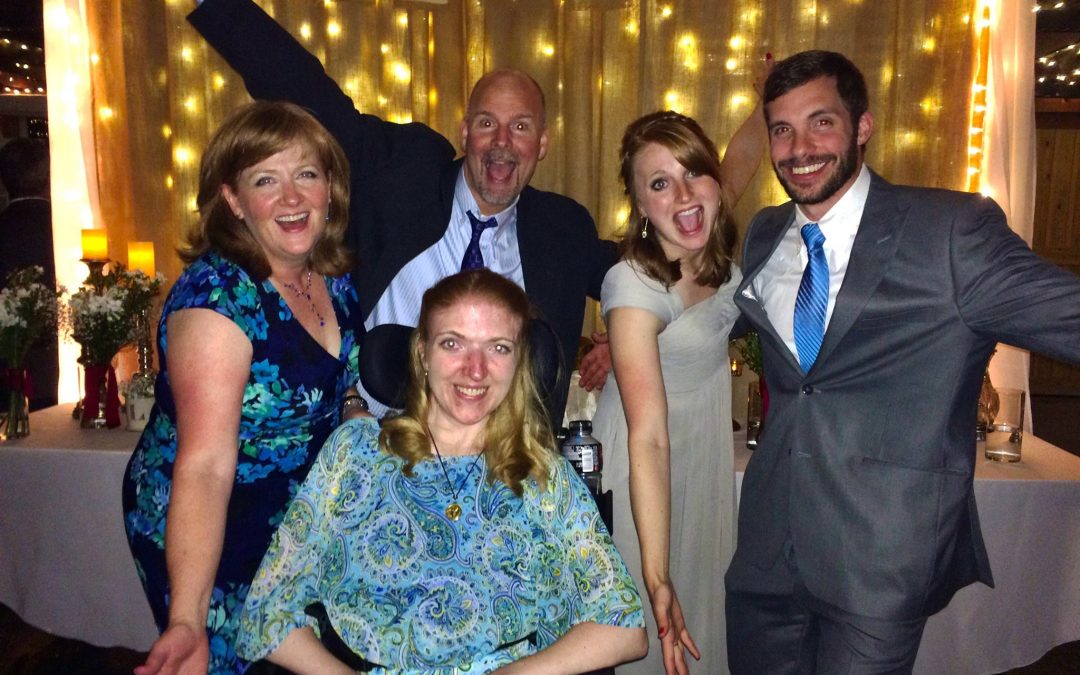This month, we are raising awareness for Neurofibromatosis through fundraising efforts for the Children’s Tumor Foundation. Today, we’re sharing a personal connection to this cause. One of our engineers, Valerie Hill, shares her family’s story and more information about the disorder below. If you are interested in contributing to our fundraiser, please follow this link. Thank you.
WHAT IS NUEROFIBROMATOSIS (NF)?
Neurofibromatosis (NF) is a genetic disorder that affects one in every 3,000 people worldwide. This disorder causes tumors to grow on any nerve ending throughout the body. There are three types of NF: NF1, NF2, and schwannomatosis. NF1 is the most common and has benign or malignant tumors that can manifest on or under the skin. NF2 has benign tumors that manifest on the nerves that carry sound and balance coordination from inner ear to the brain. Schwannomatosis is the least common type, where benign tumors – called schwannomas – usually develop on spinal and peripheral nerves. These tumors develop when Schwann cells begin to grow abnormally and are typically painful and hard to manage.
WHY ARE WE RAISING MONEY FOR NF RESEARCH?
My sister, Odessa Black, has NF Type 1. She was diagnosed at age 6 as a spontaneous mutation. Up to age 14, she did not have any NF-related issues. From age 14 to 21, she had more than 6 NF related surgeries to remove tumors growing on her spine and neck. After each surgery, the tumors grew back. Luckily, these tumors were benign, however, they were painful and eventually hindered her ability to walk without the help of a cane or walker.
In 2008, age 21, she had a Malignant Peripheral Nerve Sheath Tumor (MPNST) which is a high grade malignant tumor in the sciatic nerve of her left leg. They had to remove a portion of her sciatic nerve resulting in no function below the knee. Odessa is a rare MPNST survivor. Over time from all the surgeries and nerve damage, Odessa has become quadriplegic. At this point in her journey, she has undergone 24 NF-related surgeries in her 30 years of life.
WHAT ARE TREATMENT OPTIONS FOR NF?
The main treatment for NF is surgery – which damages or severs the nerve, resulting in pain, loss of sensation, or function. Currently, there is no cure for NF. However, recently there have been various drug trials for adolescents and adults with NF. Odessa participated in the Pfiser MEK Inhibitor Drug Trial from 2014 to 2016. While on the drug, her tumors shrank 24% and she had slightly more use of her arms and legs. However, the side effects were almost unbearable. After the trial was over, her tumors grew back to the size they were originally. This was very disappointing to Odessa and our family, but we know that this information will benefit the drug trial research and help find a better alternative to treating NF in the long run.
Recently, Odessa has received compassionate use approval to start taking AstraZeneca MEK Inhibitor. From what we have heard, this drug has had very positive results with less severe side effects.
LIVING WITH NF
NF does not only affect the patient, but the entire family. The divorce rate in families with a disabled child is about 85%. Many sacrifices must be made by the family to accommodate doctor appointments, surgeries, and stress. Because NF is a progressive disorder, it feels like a ticking time bomb waiting to explode. Since there are no cures or treatments, we (the families) must focus on making life as joyous as we can. Much of what we can control in a situation with NF boils down to the overall quality of life.
THE FUTURE OF NF RESEARCH AND HOW YOU CAN HELP
Over many years, NF research has made great strides. The MEK Inhibitor is a good start, but we are not quite there yet. As we continue with NF research and clinical trials, we must never lose hope that we will find a treatment for NF. We must find a treatment – for Odessa, for the families, and for everyone who currently has or will have NF in the future.
To donate directly to our fundraiser, please visit join.ctf.org/engineeringsolutions. For more information about NF and how you can make a difference, visit ctf.org.

